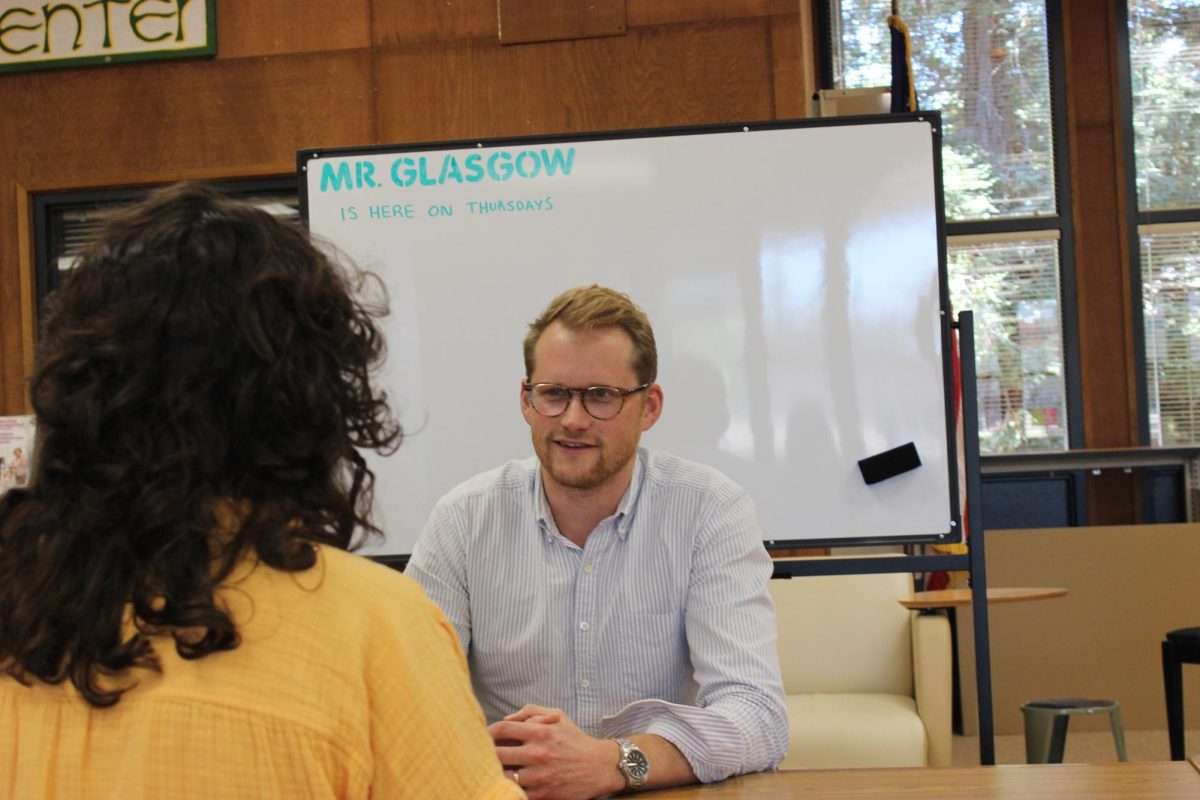Twice a year, the actors in San Marin’s musical theatre program spend roughly 10 hours a week going over lines, scenes, and dances; they stay after school until 9 p.m. and sacrifice their weekends in the Emily Gates Performing Arts Center. Twice a year, they get on stage every night for six days in a row and perform their hearts out, but nobody really stops to consider what is happening backstage.
In addition to the actors, many other people help to run the shows, including techs who manage the microphones, the spotlights, the costumes, and the props. However, one group seems to go unnoticed by the school as a whole, one group who is working just as hard as the cast and crew to make the production possible: the live music playing backstage.
San Marin has its own pit orchestra, which is similar to professional theatrical productions. It is not offered as a class because it does not meet the hour requirement to qualify as one, and students who participate are not given class credit for it. Instead, they receive community service hours as a form of compensation.
Allison McIvor, who teaches music at San Marin, also puts in extra hours to teach pit orchestra. Despite the fact that it is not a class, McIvor receives pay for her time because it falls under the umbrella of musical theatre, which is one of her classes.
The musicians meet from 6 to 9 p.m. on Tuesdays and Thursdays, with even less time to rehearse than the musical theatre students do. There is no audition process, and students are only able to join if invited or if not enough people who are requested have the time.
“When we figure out what show we’re doing, I look at the orchestration to see which instruments are needed,” McIvor said. From there, she decides who to invite to play.
“I wasn’t asked, I got volun- told,” junior Tippy Thomson, who plays violin, said. “I was kind of interested in what the pit orchestra was doing because I avoided being in music the first two years I was here, so I was like, ‘this is cool!’”
Along with the joy, students can experience stress as well.
“It’s stressful if I don’t know my part well enough, but other than that it’s really fun,” Thomson said.
San Marin Music competes with Novato High, home to the Marin School of the Arts (MSA) program. Despite its large music department, Novato High does not have a pit orchestra and uses tracks for its music.
“I honestly don’t know why we never used a pit,” junior Gabe Schutz, a former MSA Theatre Arts student, said. “Maybe because of scheduling [conflicts] between the two MSA classes.”
Because San Marin’s pit orchestra is not classified as a class, it does not have to be made up entirely of students. Tak Maga, who has played piano for four shows since graduating in 2019, continues to return to be in the pit orchestra as an alumni.
“You get to support the cast from backstage. It’s a different kind of performance; you’re doing the same show for six nights for a high school production,” Maga said. “You could be doing it for months in a professional production. It’s really a test of endurance, making sure you’re ready to go, doing the same thing every night.”
As time-consuming and stress-inducing as pit orchestra may be, most students enjoy participating in it. Senior Barrett Kirchner has played the drums for the pit after initially joining for “Something Rotten!” in 2023.
“I come back because it’s really fun; you get to meet a lot of different faces, talk to almost anyone, and you get to see the humor and skill of everyone involved,” Kirchner said. “It pretty much gets you out of that little bubble that you can be used to and meet new people.”
Kirchner originally joined the pit because it interested him after not having an opportunity to experience something similar at his old school.
“My favorite part about doing pit is playing the music, it has been a big part of my life for as long as I can remember and it’s so fun getting to play a wide range of genres,” Kirchner said.







































